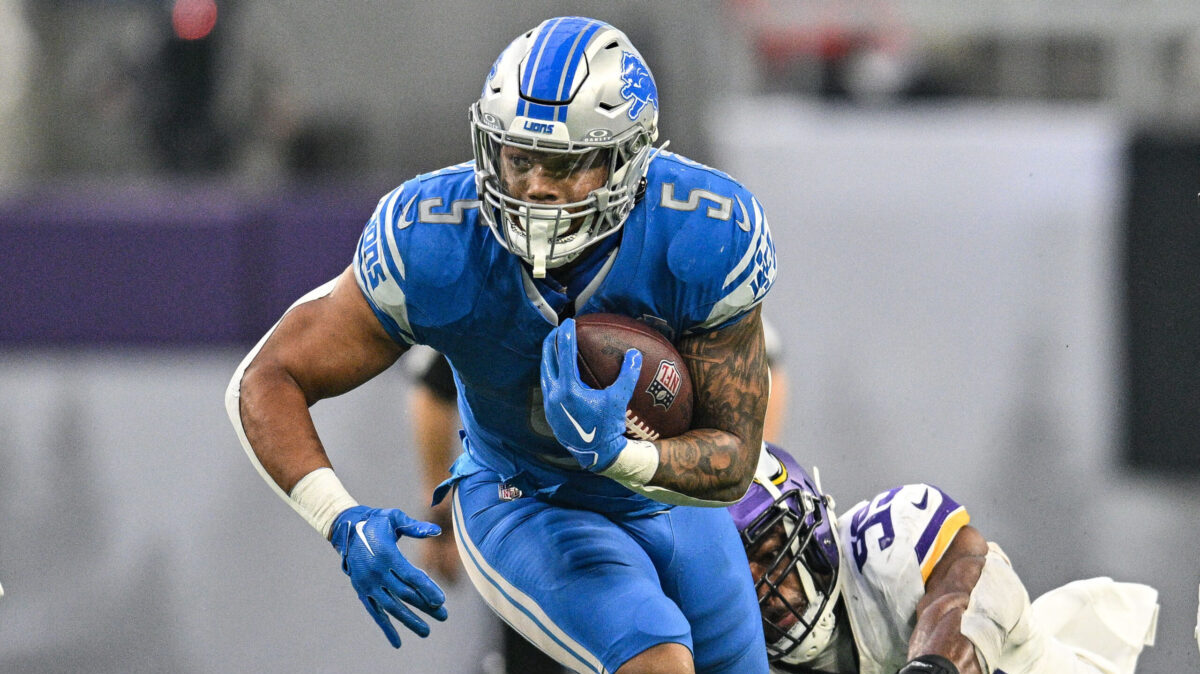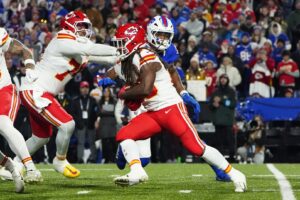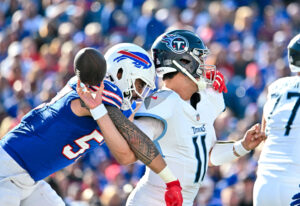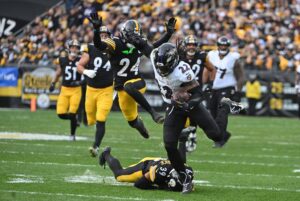The Zero-RB strategy is a prominent draft strategy many fantasy users know about and use in their drafts. With the tiers of running back talents having larger gaps than ever before, some think it’s the better way to go. Let’s break down this strategy before getting into the minute details.
Fantasy Football Zero-RB Strategy
What is the Zero-RB Strategy?
This strategy is exactly what it sounds like where fantasy owners prioritize every position besides running back. By avoiding running back early in the draft, it allows the individual to focus on other positions. Running backs often have a lot of turnover, so the users aim for that as well as ride the waiver wire for them.
There are three different levels within the strategy based on how aggressive you want to be with not drafting running backs:
- Conservative: Take first running back no earlier than Round 4
- Moderate: Take first running back no earlier than Round 6
- Extreme: Take first running back no earlier than Round 8
It’s up to each owner how they spend their picks before they begin taking running backs. Some may opt for high-end wide receivers such as Amon-Ra St. Brown, Puka Nacua, or Davante Adams. Others will choose to draft a combination of receivers, tight ends, or even quarterbacks.
Positives of the Strategy:
This philosophy of drafting counters what a lot of draft experts convince you to do early in the draft. Since elite running backs are much less common, the push is to try and get someone like Bijan Robinson or Breece Hall. If everyone else focuses on these running backs, it leaves a plethora of wide receivers available to choose from each round.
Like many drafting strategies, the Zero-RB strategy is flexible based on the format of each league. If your commissioner has set up a superflex and allows two quarterbacks to start, you can take quarterbacks early. Leagues with fewer teams can pull this off even better as the talent at the other positions isn’t spread out as much.
Negatives of the Strategy:
Running backs can make or break you on any given day, just like all positions. This strategy relies on positions such as quarterback, wide receiver, or tight end to make up for the production you won’t get from running backs. Sometimes, the slack will have to be picked up by multiple players if your opponent starts two workhorses like Derrick Henry and Kenneth Walker III.
It’s important to really hit on the early picks if this strategy is used. Bigger leagues or those with deep benches really struggle with the Zero-RB strategy. Even the conservative approach would make it tough if your commissioner allows for 10 bench spots. This strategy has also become more popular as people try to think outside the box and gain an edge as early as the draft.
How to Make it Work?
The trick that seems to work best with this strategy from mock draft experience is to go in more on the conservative side. Tell yourself you won’t touch a running back for the first three rounds. As the draft progresses, monitor the running back board to see who is available.
If the third round finishes and there are still several starting running backs on the board, consider upgrading to the moderate approach. Players such as Joe Mixon, David Montgomery, and Zamir White are just a few of the ones who should still be available.
Once the number of starting running backs starts to dwindle and you get that little sense of panic in your head, it’s time to invest in a running back. Those who are more risk-averse will crack earlier than those who like to be aggressive and try to find the next Kyren Williams or De’Von Achane.
Now, there is a loophole to this strategy called the hero-RB. The hero-RB strategy allows the drafter to use their first pick on a running back before resorting to the original gameplan. Owners tend to do this if they have a top 3-5 pick and can get someone like Christian McCaffrey.
Getting both running backs (or just the second if you go the hero route) is essential to saving the team. It wouldn’t even be a stretch to lock up a third running back soon after to provide some depth on the bench.
The best piece of advice is to get a feel for it in mock drafts. See what works and what doesn’t by trusting your gut.
Main Photo: Jeffrey Becker-USA TODAY Sports






